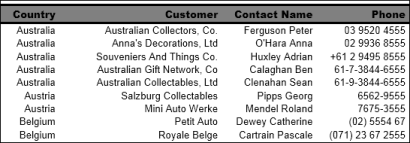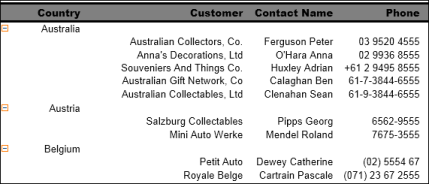Compare the reports in Figure 5-8 and Figure 5-9. The report in Figure 5-8 displays customer information in a simple list. The data rows are sorted by country. Notice the repeated country names in the first column.
|
Figure 5-8
|
The report in Figure 5-9 shows the same data. Unlike the previous report, this report groups the rows by country, removing the repeated entries.
|
Figure 5-9
|
|
|


